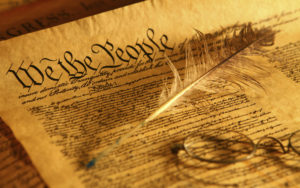Of all the amendments to the U.S. Constitution — all 27 of them — the one that gives me the most serious case of heartburn is the Second Amendment.
Here is what this amendment says. It’s brief, but it’s so damn confusing in my humble view: A well-regulated Militia, being necessary to the security of a free State, the right of the people to keep and bear Arms shall not be infringed.
Americans are talking yet again about this amendment. Events in Las Vegas over the weekend have thrust this issue to the top of our minds once more. We’re talking about gun violence, gun control. We’re even debating whether we should be debating this issue at this time. I believe we should.
But I want to look at the Second Amendment’s sentence construction. I’ve read it thousands of times over my many years on this good Earth. I don’t understand what it’s saying.
The founders were smart men. They did a good job of developing a fairly cogent and concise bill of rights that are contained in the first 10 amendments to the Constitution. The Second Amendment, though, seems to make two points that are not connected to each other.
Indeed, the first 12 words preceding the comma seem to be lacking an ending. It refers only to a “well-regulated” militia and the necessity to have one to maintain “the security of a free State.” That’s it!
The following clause could stand as a complete sentence in that it contains a subject, some verbs and a predicate.
Those who favor stricter controls on firearms point to the first clause as their rationale. Those who oppose such controls look to the clause after the comma as their rationale.
My sense is that here is where the debate over this amendment seems to break down. Those on opposing sides of this mammoth chasm place their emphases on separate clauses. One means something different from the other one.
I know that courts have ruled countless times that the amendment means that Americans can own firearms, that it’s protected in the Constitution.
The Bill of Rights was ratified Dec. 15, 1791 and thus, the Constitution was established to form a framework for our representative democracy.
The founders got it mostly right when they crafted that framework. They wrote the Bill of Rights almost without exception with sentences that make sense; nine of the 10 amendments comprising the Bill of Rights were constructed in ways that make sense to laypeople such as yours truly.
The Second Amendment, though, gives me heartburn.
